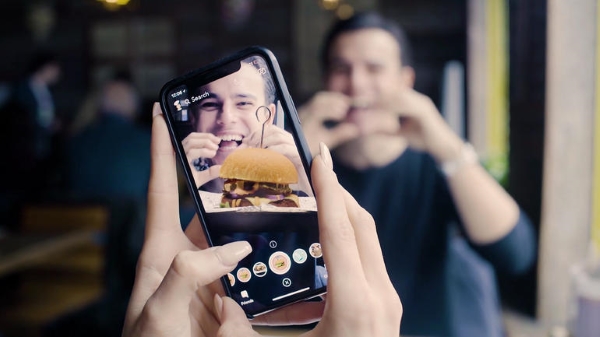[Augmented reality hasn’t gotten that much attention from presence scholars but that’s likely to change as the technology improves and the public begins to encounter it more often. This short story from ZDNet is about one of the ways restaurants are using AR to create an illusion within and linked to the otherwise nonmediated world. See the original story (or YouTube) for a one minute video and the Kabaq website for more information on this and related uses of AR. –Matthew]

Augmented Reality is coming to a restaurant near you
Food porn is going 3D as the restaurant industry explores augmented reality to attract diners
By Greg Nichols
July 31, 2018
I hate opening a menu and finding page after page of entree options.
Unfortunately for me, seems it won’t be long before the densest menus jump to life in the form of 3D, augmented reality visualizations.
Augmented reality developers are taking aim at the dining industry, which in turn is likely to be a prime early adopter of AR technology.
That’s because AR deployments, done well, promote engagement with customers. For example, patrons of NYC-based Magnolia Bakery can currently peruse the catering menu by projecting virtual renderings of cakes and cupcakes via a mobile device, which has been a big hit.
The same technology is making its way into sit-down restaurants, and it’s a sure bet you’ll soon be seeing diners gazing at iPads and smartphones as they visualize meals that could soon be in smelling distance.
The trend follows the deployment of AR experiences by food and beverage companies like Coca-Cola and Treasury Wine Estates, which makes 19 Crimes wine. A Treasury Wine app, for example, enables customers to watch and listen to stories of the criminals pictured on the 19 Crimes labels.
Burger chain Bareburger, which primarily has restaurants in New York, recently partnered with augmented reality startup Kabaq, the same company behind the Magnolia Bakery experience, to turn its menu into 3D burger models. Customers access the AR menu via Snapchat.
Bareburger expects to replace all its printed menus with 3D visualizations soon.
Mobile technology is already embedded in the restaurant industry’s DNA thanks to the likes of Yelp and Instagram, so it makes sense that restaurateurs would be out front in AR adoption.
Part of the appeal, to be sure, is the hype AR technologies can bring. During the Pokemon epidemic of 2016, Revel systems, a point of service platform, found that 82 percent of Revel-customers with close-by Pokestops experienced increased weekly foot traffic and 63 percent saw weekly sales climb.
The lesson was clear: Properly harnessed, smart mobile technology can bring customers in the door.
Whether diners begin clamoring to interact with their food before they order or not remains to be seen.
At a minimum, parents may need to update the old admonition about not playing with your food.